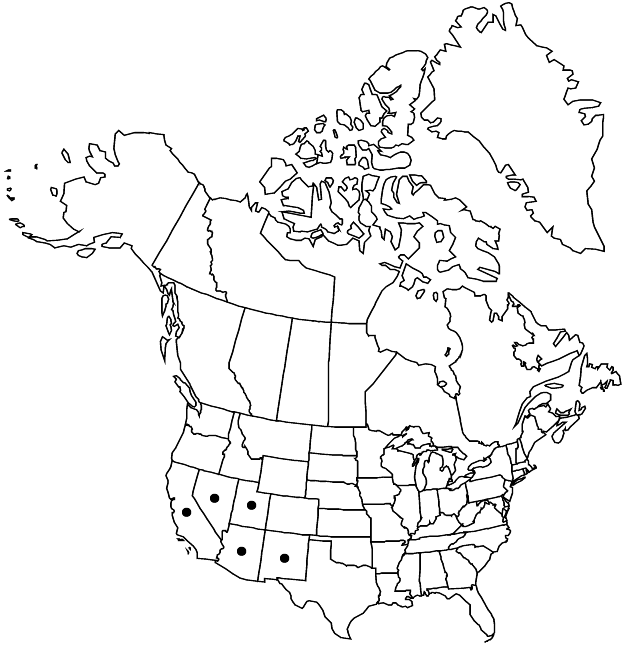Difference between revisions of "Eriogonum trichopes"
in W. H. Emory, Not. Milit. Reconn., 150. 1848.
FNA>Volume Importer |
FNA>Volume Importer |
(No difference)
| |
Revision as of 20:10, 24 September 2019
Herbs, spreading to somewhat erect, annual, 1–4.5(–6) dm, glabrous and often glaucous, yellow-green. Stems: caudex absent; aerial flowering stems erect, occasionally hollow and fistulose, 0.5–2(–3) dm, glabrous, minutely hirsute or short-hispid proximally. Leaves basal; petiole 1–6 cm, hirsute; blade broadly oblong, (0.5–)1–2.5(–4) × (0.5–)1–2(–3) cm, short-hirsute on both surfaces and greenish, margins wavy. Inflorescences cymose, open to dense, usually spreading, 5–30 × 5–50 cm; branches usually not fistulose, glabrous; bracts 3, scalelike, 1–4 × 1–2 mm. Peduncles mostly erect, straight, capillary, 0.5–1.5 cm, glabrous. Involucres turbinate, 0.7–1 × 0.6–0.9 mm, glabrous; teeth 4(–5), erect, 0.3–0.4 mm. Flowers 1–2 mm; perianth yellow to greenish yellow with greenish to reddish midribs, densely hirsute with coarse curved hairs; tepals monomorphic, narrowly ovate; stamens exserted, 0.9–1.5 mm; filaments sparsely pubescent proximally. Achenes light brown to brown, lenticular to 3-gonous, 1–1.5 mm, glabrous.
Phenology: Flowering year-round.
Habitat: Clayey, sandy to gravelly flats, washes, and slopes, mixed grassland, saltbush, creosote bush, blackbrush, and mesquite communities, pinyon and/or juniper woodlands
Elevation: -60-1500(-1900) m
Distribution

Ariz., Calif., Nev., N.Mex., Utah, Mexico (Baja California, Chihuahua, Sonora).
Discussion
Eriogonum trichopes is common on the Sonoran Desert and the southern portion of the Mojave Desert from southern California (Imperial, Inyo, Riverside, San Bernardino, and San Diego counties), eastward across southern Nevada (Clark, Lincoln, and Nye counties), southwestern Utah (Washington County), and Arizona (Coconino, Cochise, Gila, Graham, La Paz, Maricopa, Mohave, Pima, Pinal, Santa Cruz, Yavapai, and Yuma counties) to southern New Mexico (Cibola, Dona Ana, Grant, Hidalgo, Luna, Otero, and Valencia counties). It is also found to the south in northern Mexico (Baja California Norte, Sonora, and Chihuahua). Two related species occur in Baja California, the perennial E. scalare and the annual E. intricatum. Unlike E. trichopes, which occasionally has inflated stems, neither of those Mexican species exhibits that trait.
Selected References
None.